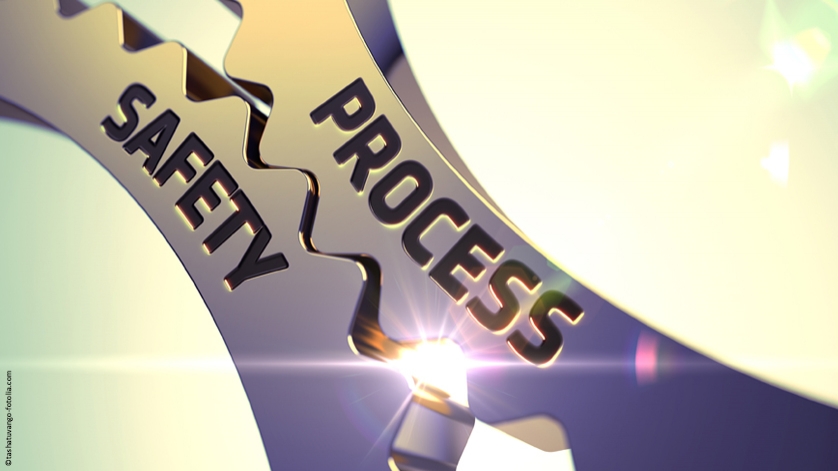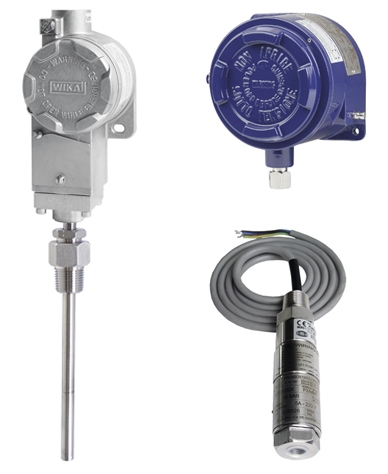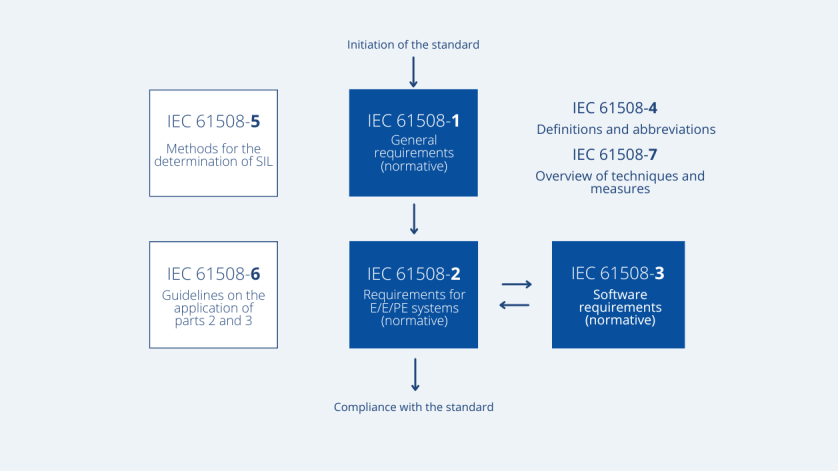
Mechanical pressure and temperature switches perform sensitive tasks in safety-relevant applications, e.g. the safety function and monitoring of limit values. Their functional safety must be guaranteed accordingly. This is always the case if the instruments fulfil the requirements of the corresponding safety integrity level (SIL) in accordance with the IEC 61508 standard. WIKA switches have been issued SIL approval due to their proven operational safety.

Examples of WIKA switches whose functional safety is SIL-certified: a compact temperature switch with Ex d flameproof enclosure (model TCA; left), a Bourdon tube pressure switch (model BA/BAX; top right) and a miniature pressure switch (model PXS; bottom right).
In the process industry, safety enjoys the highest priority. Hazards to people, the environment and the plant that can emanate from critical processes must therefore be reduced to an acceptable minimum. As basic standard, IEC 61508 by the International Electrotechnical Commission (IEC) provides the necessary stipulations for this. These are defined in different safety integrity levels, SIL 1 to 4. An overview of the terms used can be found in our article Pressure sensors according to SIL – commonly used terms and abbreviations.
The basic standard places equal responsibility on the responsible process developers and the manufacturers of the necessary components. For each instrument, it defines limit values for the probability of failure of a safety-relevant function. At the same time, it provides criteria for the possibility of controlling and avoiding systematic faults.
What does standard IEC 61508 include?
Standard IEC 61508 is an internationally recognised standard and defines requirements to ensure the reliability and efficiency of safety functions in various industries such as the automotive and aerospace industries or in medical engineering. It thus places equal responsibility on the responsible process developers and the manufacturers of the necessary components. For each instrument, it defines limit values for the probability of failure of a safety-relevant function. At the same time, it provides criteria for the possibility of controlling and avoiding systematic faults. In total, the standard consists of 7 parts (IEC 61508-1 to IEC 61508-7). Parts IEC 61508-1 to IEC 61508-3 are normative and must be observed to ensure conformity with the standard. Parts IEC 61508-4 to IEC 61508-7 are informative guidelines that provide suggestions for tools and approaches that can be used to fulfil the requirements of the normative clauses where necessary.

Representation of the relationship between the different parts of standard IEC 61508. The arrows illustrate the process and interactions between the normative and informative parts of the standard.
What are the differences between IEC 61508, DIN EN 61508 and DIN 61508?
IEC 61508 is a standard by the International Electrotechnical Commission (IEC), which is internationally recognised and serves as a guideline for the development, testing and certification of electrical and electronic devices and systems. DIN EN 61508 defines specific requirements for the German market, while EN 61508 defines the specific requirements for the European market, based on IEC 61508. These standards enable a uniform approach to the development, testing and certification of safety-relevant electrical and electronic systems.
When the topic of “functional safety” is discussed in expert groups in connection with SIL approval, it is mainly concerning electrical systems. However, numerous mechanical components are also integrated within safety-relevant applications. These include measuring instruments needing no auxiliary power, which therefore work reliably, even in the event of a power failure. A SIL approval for these also means a clear statement on functional safety. In the case of mechanical parts, it is primarily a question of the effects of aging and wear.
Individually installed: SIL 2, combined redundantly: SIL 3
The SIL certificate for WIKA’s pressure and temperature switches was issued in 2019 by exida, a globally recognised testing company. According to its assessment, the instruments, when installed individually, meet the requirements of SIL 2, and in redundant combination, they even meet those of the level SIL 3.
Two routes to assessment
In addition to the actual classification, the certificate for the WIKA switches also contains the addition “route 2H”. In principle, there are two ways to arrive at a SIL assessment: “Route 1H” states that the instruments or components in question have been developed and manufactured in accordance with the respective SIL specifications. “Route 2H”, on the other hand, confirms that the assessment was additionally based on their operational safety, as in the case of WIKA switches. The certified error rate is calculated from data collected during use in an application in the field and transmitted to exida. The SIL assessment of functional safety is thus carried out on a realistic basis: For each component of a device, at least 100 million operating hours must have been proven.
Empirical values in a database
The SIL assessment in accordance with route 2H refers to the empirical values from field use, which are stored in an exida database. There, specific operating conditions such as temperature, vibration etc. are taken into account.
Note
Detailed information on switches with SIL certificate – pressure switches of the M, B, A, D, PC and PX series as well as temperature switches of the T series – can be found on the WIKA website. The approval certificate is also available as a PDF file there. If you have any further questions, your contact will gladly help you.
Infobox
What is a safety-related system in accordance with IEC 61508?
The international series of standards IEC 61508 standardises the development of electrical, electronic as well as programmable electronic systems and products. The standard deals with devices and systems that perform automated safety functions. For example, some SIL-certified sensors and switches from WIKA. Standard IEC 61508 “Functional safety of safety-related electrical/electronic/programmable electronic systems” consists of seven parts and was first published in 1998.
Also read our articles
SIL pressure switch: Safety in tyre manufacturing

